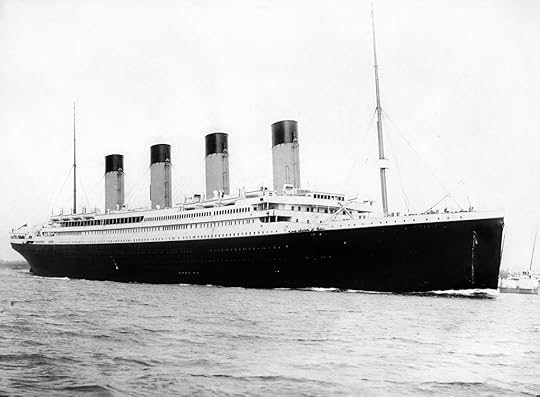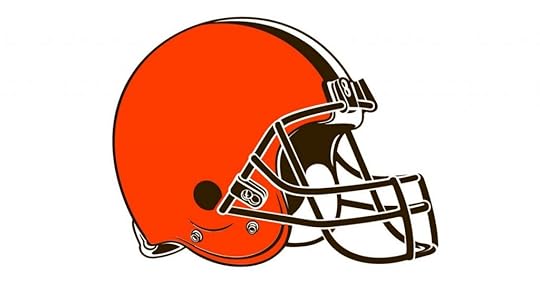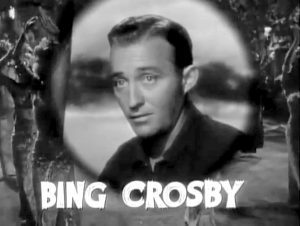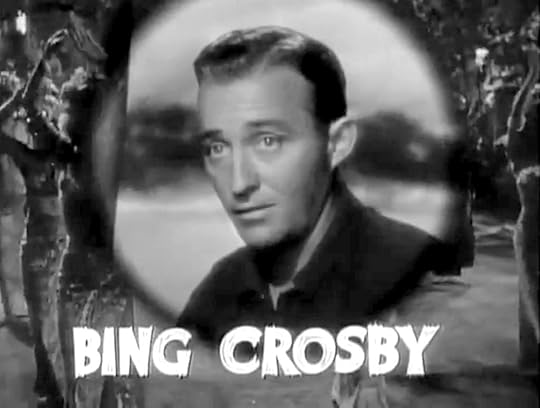Bathroom Readers' Institute's Blog, page 48
December 28, 2017
Did Andy Kaufman Fake His Death?

Netflix recently released Jim & Andy: The Great Beyond, a documentary about Man in the Moon, the 1999 film about avant grade comedian Andy Kaufman starring Jim Carrey. One thing neither movie covers: Did Kaufman fake his 1984 death and assume another identity as one of his patented comedy stunts?
The Daughter
The Andy Kaufman Awards are handed out each year to a comedian who’s keeping alive the spirit of Kaufman’s bizarre, experimental, reality-bending brand of comedy. At the 2013 iteration, a woman appeared on stage with Kaufman’s brother, Michael Kaufman, and delivered the shocking news that she was Kaufman’s daughter, and that dad faked his death to be a stay-at-home parent for her and her brothers and sisters. (The whole thing turned out to be a Kaufmanesque stunt — the woman was an actress named Alexandra Tatarsky.)
The Hiding Out Theory
Some say that Kaufman so hated being famous that he faked his own death to get away from it all. He didn’t die of lung cancer at all, but pretended to, and moved to a remote town in New Mexico where he leads a monastic existence.
The Jim Carrey Theory
There’s one tantalizing idea why Carrey was so able to channel Kaufman’s unique sensibility for Man on the Moon: because they’re the same person. Some fans think that Kaufman “died” in 1984, underwent plastic surgery, and emerged later that year as an up-and-coming Canadian comic and actor named Jim Carrey.
The Rocco Theory
In the early 2000s, an Orange County swap meet merchant named Steve Rocco won a seat on the local school board. He’d show up wearing dark glasses and would spend meetings ranting about a secret organization that runs Orange County. This strange behavior, plus the fact that Rocco somewhat resembles Kaufman, and ran a website called Andy Kaufman Lives, led people to the “logical” conclusion.
The Donald Trump Theory
The reasoning: Trump’s over-the-top personality and nontraditional campaign were so unprecedented as to remind many people of Andy Kaufman, or his kooky characters like “Foreign Man” (which became his Taxi character, Latka) or crass lounge singer Tony Clifton. Speculation was that Kaufman would “reveal” himself on election night.
The post Did Andy Kaufman Fake His Death? appeared first on Trivia Books and Facts | Uncle John's Bathroom Reader.
December 26, 2017
She Saw Three Ships (And Lived)

Twenty years ago this month, millions of filmgoers packed movie theaters to watch Titanic, the heartbreaking, realistically-rendered telling of the sinking of the famous ocean liner of the same name in 1912. Here’s the little-known — and very harrowing — tale of a Titanic survivor.

Tuberculosis
Socialite and activist Molly Brown became known as “The Unsinkable Molly Brown” for her most famous fear: being onboard the Titanic when it crashed into an iceberg. But she only survived one horrific maritime disaster. Violet Jessop was truly unsinkable, both at sea and on land. Shortly after being born in 1887 to Irish parents in Argentina, she developed tuberculosis and wasn’t expected to live more than six months. Instead, she fought off TB and lived to adulthood, living in England and working as a stewardess.
Unemployment
 However, it wasn’t easy for 21-year-old Jessop to find work. In the 1900s, the major ship companies customarily hired older women to be stewardesses (a precursor of today’s flight attendants), believing them to appear more “trustworthy” to passengers. So, Jessop dressed to make herself look older. In 1908, she got a job with the White Star Line, first with the Majestic, and then the Olympic.
However, it wasn’t easy for 21-year-old Jessop to find work. In the 1900s, the major ship companies customarily hired older women to be stewardesses (a precursor of today’s flight attendants), believing them to appear more “trustworthy” to passengers. So, Jessop dressed to make herself look older. In 1908, she got a job with the White Star Line, first with the Majestic, and then the Olympic.
Her first accident
On a routine trip in 1911, the Olympic ran into a British warship called the HMS Hawke. The impact severely damaged the Olympic’s hull (and below the water line), but it hobbled back to port in England without sustaining any casualties.
Her second accident
About seven months later, Jessop was assigned to another of White Star’s ships, the Titanic, on its maiden voyage. But while the boat quickly sank, Jessop still had to work, charged with standing on a deck and acting out proper safety and evacuation procedures to non-English-speaking passengers unable to understand the verbal orders. Jessop was among the last crew members to flee the Titanic, and after a few hours adrift in a lifeboat (while holding a baby that had been handed to her), she was among those rescued by the RMS Carpathia.
Her third accident
When World War I broke out, the White Star Line converted its ship the Britannic into a hospital transport vessel. Jessop worked as a stewardess in conjunction with the Red Cross onboard the Britannic. In November 1916, the ship was less than an hour into a voyage on the Aegean Sea when an explosion of some kind — it could have been a mine, or a torpedo — led the ship to rapidly sink. Thirty people died, but Jessop survived. She almost got killed again during this particular ordeal. Her lifeboat got stuck under the stern, and she and other passengers were nearly torn apart by the boat’s propellers. She jumped out of her lifeboat and sustained serious injuries…but she survived. And resumed her work for the White Star Line in 1920.
The post She Saw Three Ships (And Lived) appeared first on Trivia Books and Facts | Uncle John's Bathroom Reader.
The Worst Teams in NFL History

The 2017 Cleveland Browns are about to make NFL history. No, not in a good way — they’re on track to become one of the few teams to ever rack up a completely winless season.

In 2016, the LeBron James-led Cleveland Cavaliers ended a nearly 50-year sports championship drought in Cleveland. In football, however, the Cleveland Browns remain a stranger to the Super Bowl. Before the NFL and AFL merged in the late 1960s, the Browns amassed four NFL championships. Post-merger, they’ve never gone to the big game at all, and they certainly won’t be going in 2018. The Browns are about to set a record for the worst two-season performance in modern NFL history. In the 2016 season, the Browns went 1-15, and didn’t get that first win until the second-to-last game of the year (played on Christmas Eve). Right now the Browns boast a 0-15 record. Should they hold out and not win this weekend, they’ll be 1-31 for these two seasons.
So far, only one other team in the NFL’s current era of a 16 game season has lost every single one they played: the 2008 Detroit Lions. Oddly, the Lions are like the Browns in that they were a four-time NFL champion in the pre-merger days, but have never made it to a Super Bowl and rarely make the playoffs. In 2008, they were the worst they’d ever been, allowing opponents to score an average of 32.31 points per game, the third-highest ever. There weren’t even many nail-biters. Almost every single one of those 16 losses was a blowout, except for a couple of four-pointer deficits, and a game against the Vikings with a score of 12 to 10.
Expansion teams almost always have a hard time during their first few years of existence, and the Tampa Bay Buccaneers are no exception. In 1976, the team entered the NFL and didn’t challenge the status quo much at all. The team’s first-year record: 0 wins and 14 losses. In 1977, things didn’t improve much at all. The Bucs lost the first 12 games of that season, before going on a “hot streak” in which they won their last two games of the year.
The post The Worst Teams in NFL History appeared first on Trivia Books and Facts | Uncle John's Bathroom Reader.
December 24, 2017
Forgotten Festive Fads and Christmas Traditions

It just wouldn’t be Christmas without the stockings hung by the chimney with care, a punch bowl full of eggnog, and the game where you slap your friends on their backside. That one, and many others, are once steadfast yuletide traditions that slowly disappeared.

Aluminum Christmas Trees
In the 1950s and 1960s, any sort of scientific breakthrough that seemed new and futuristic quickly caught on. Even when it came to Christmas trees, people bought into the notion that manmade was superior to the natural. That’s why millions bought aluminum trees introduced by a company called Modern Coatings. Made of metal and resembling a tree’s shape, they came in all kinds of candy colors and they glistened in the light. It was all a fad — and being disparaged in the 1965 holiday classic A Charlie Brown Christmas was the final nail in the coffin.
Hot Cockles
Have you ever played the game “Heads-Up Seven Up”? It’s a classroom favorite on days when bad weather precludes kids going outside for recess, so instead they play this game. Players keep their heads on their desk and stick their thumb out while one of seven other kids that are “it” walk around and touch those extended thumbs. If your thumb gets touched, you try to guess who did it. It’s a very tame variation on an early 19th century British game called “Hot Cockles.” Played at Christmas parties — where, clearly, a lot of alcohol was consumed — it involved one player getting blindfolded. Then, someone would smack their rear-end, and then the player had to guess the identity of the secret slapper. (The strict moral codes of the Victorian era put an end to “Hot Cockles” as a Christmas tradition.)
Cake-throwing
A Christmas cake is still a moderately popular tradition in both England and the U.S. — gingerbread cakes, fruitcakes, chocolate cakes, and others are commonly enjoyed for the holidays. Back in the 1890s, some families made two cakes. The first one was for enjoying, and the second one was for throwing. Yep, they’d throw a perfectly good cake against a wall. It was a superstition — wasting that food on Christmas was thought to ensure that the next year would be one without hunger.
Roses and Lavender
There are some strong scents associated with the winter holidays, such as cookies baking and an indoor tree. In Colonial Virginia, families placed bouquets of roses and lavender around their homes — those were their Christmas smells.
Humble Pie
Christmas could be a time for pie as well as cake. Way back in the 1600s, English families traditionally feasted on umble, or humble pie. It’s a meat pie filled with humbles — which are a deer’s organs. (Most commonly used humbles: the heart, the liver, and the brain.)
The post Forgotten Festive Fads and Christmas Traditions appeared first on Trivia Books and Facts | Uncle John's Bathroom Reader.
December 22, 2017
I’m Dreaming of a Weird Christmas (Movie)

Need a vacation from Christmas Vacation? Don’t think It’s a Wonderful Life is so wonderful anymore? Then check out one of these, well, quirky, holiday movie recommendations from Uncle John.
All American Christmas Carol (2013)
It’s the umpteenth adaptation and variation of Charles Dickens’s A Christmas Carol, in which the Scroogey central character learns the true meaning of Christmas after being visited by three ghosts. This is the first and only one about a selfish mother who lives in a trailer park.
Don ’t Open Till Christmas (1984)
This movie poses the question, “What if Jack the Ripper were around in the 1980s and he targeted only people in Santa Claus costumes?” In this low-budget Christmas slasher movie, a woman whose father was done in by the Claus killer and her flautist boyfriend have to save the day…and Christmas.
Christmas Icetastrophe (2015)
The good news: It’s going to be a white Christmas! The better news: It’s going to be a white Christmas all over the entire world. The bad news: It’s all because meteorites hit the Earth and it messes up the environment so much that it starts off a new Ice Age. All anyone wants for Christmas is to survive.
Santa with Muscles (1996)
With his white-blond hair and beard, famous wrestler and ‘80s icon Hulk Hogan kind of resembles Santa Claus…if Santa Claus were a wrestler from the ‘80s. In this comedy, Hulk Hogan plays a bodybuilding supplements salesman who has to run from the police when a game of paintball goes awry. He flees to a mall and tries to escape by putting on a Santa suit, but then he gets hit in the head, gets amnesia, and then believes he’s the real Santa.
Jack Frost (1996)
In another tale of grisly Christmas horror, a serial killer on his way to prison gets struck by a truck full of genetic material, which makes him a super powerful snowman. He then embarks on a murderous quest of revenge.
Jack Frost (1998)
Somehow there are two odd holiday movies about Jack Frost released within two years of each other. In this one, a blues musician (Michael Keaton) who never spends time with his kids, dies in a car accident but is reincarnated as a snowman so he can hang out with his kids more.
The post I’m Dreaming of a Weird Christmas (Movie) appeared first on Trivia Books and Facts | Uncle John's Bathroom Reader.
December 21, 2017
Things You Didn’t Know About Bing Crosby

Who’s the most popular musician on the radio today? Well, it’s December…so it’s Bing Crosby. His recordings of Christmas songs are perennial classics, so much so that nowadays he’s pretty much exclusively celebrated with the holiday. But in the mid-20th century, there was nobody bigger than Bing.
White Christmas
According to pre-computerized sales tracking systems, Crosby’s “White Christmas” is the bestselling holiday song of all time, with 50 million people buying a copy since 1942. It’s also the bestselling single of any kind, ever, according to Guinness World Records. Amazingly, some sources say that the third-most-popular single of all time is Crosby’s 1945 recording of “Silent Night.”
Crosby the Singer
Crosby got his professional start as a singer in 1927 with the popular band led by Paul Whitman. By 1930, Crosby was a superstar, having sung on a whopping 32 top 20 hits. Then he went solo…and amassed more than 300 top 20 hits. (The Beatles only ever racked up 42.)
Crosby the Actor
In addition to his highly successful musical career, he was an extremely successful film actor, appearing in seven “Road” pictures with Bob Hope. (An eighth movie to revive the series, Road to the Fountain of Youth, was planned for 1978, but Crosby died before production started.) In 1946, three of the top five highest-grossing movies of the year were Bing Crosby movies. From 1944 to 1948, he was Hollywood’s most bankable star.
Best Actor Oscar
In 1945, he won a Best Actor Oscar for Going My Way. The next year, he was nominated (but didn’t win) for The Bells of St. Mary’s, the sequel to Going My Way. Crosby played Kindly priest Father Chuck O’Malley in both, and he’s the first actor to ever get two Oscar nominations for playing the same role twice.
Crosby the Radio Star
As if that’s not enough, he was a radio star, too. He had regular shows on almost continuously from 1931 to 1962. That’s right — not even the advent and popularity of TV, which by and large destroyed evening entertainment radio, could supplant Crosby on the radio dial.
Bingo
When the man born Harry Crosby was a child in Spokane, Washington, he loved a comics section feature called “The Bingville Bugle,” which was a fake bumpkin newspaper. One day his neighbor spotted him reading it and laughing and called him “Bingo from Bingoville.” Over time, Bingo turned to Bing.
Celebrity Golfer
He even had an impact on golf. Crosby was one of the first celebrity golfers, and his influence helped take the sport into the mainstream in the mid-20th century. He founded the annual tournament that would become the Pebble Beach Pro-Am, and he held memberships at 75 different golf clubs.
Columbo
Crosby was offered the role of TV detective Columbo in the early ‘70s. He turned it down because when the pilot episode was scheduled to shoot, he was playing in a golf tournament.
The post Things You Didn’t Know About Bing Crosby appeared first on Trivia Books and Facts | Uncle John's Bathroom Reader.
December 19, 2017
Things You Didn’t Know About Christmas Songs

You know the songs, but you probably didn’t know these fun facts about them. When the carolers hit your house, regale them with some trivia about their tunes!
“I Saw Mommy Kissing Santa Claus”
The song is built around a joke that’s never completely explained, but that most listeners understand: A child witnesses his mother smooching St. Nick…as they’re too young and innocent to realize that Mommy is kissing Daddy dressed up like Santa Claus. Some people in the Boston Catholic Archdiocese did not get the joke when the song was first released in 1952. The organization wanted the song to be banned because it glorified adultery — they thought Mommy was really kissing Santa Claus.
“Do You Hear What I Hear?”
This song has an old, liturgical feel to it, but it’s actually one of the newer entries in the holiday music canon. Gloria Shayne Baker and Noel Regney wrote it in 1962 during the Cuban Missile Crisis as a desperate plea for world peace.
“Up on the Housetop”
This jaunty tune from 1864 is believed to be the first Christmas song to mention our modern notion of Santa Claus. Songwriter Benjamin Hanby was inspired by the classic poem “A Visit from St. Nicholas,” as “Old St. Nick” is up on the housetop, about to head through the chimney.
“It’s the Most Wonderful Time of the Year”
It’s a delightful song, but one line seems a little out of tune — the lyric about people hanging out on Christmas telling “scary ghost stories.” Isn’t that more of a Halloween thing? Yes, and no. In the Victorian era of the 19th century and into the early 20th century, it was a common Christmas pastime to tell ghost stories on Christmas Eve. That’s part of the inspiration for the ghost-heavy A Christmas Carol by Charles Dickens. (So if you watch a movie version on Christmas Eve, you’re keeping the tradition alive.)
“Silent Night”
It’s a calm, gentle song, befitting its title, right? Wrong. When Franz Gruber wrote the music in Austria in 1818, he called for it to be played in 6/8 time. That’s a fast, sing-song rhythm — think Queen’s “We Are the Champions.”
“Silver Bells”
Songwriters Jay Livingston and Ray Evans called the first draft of their song “Tinkle Bell,” until Livingston’s wife pointed out that most people associate the word “tinkle” with going to the bathroom.
The post Things You Didn’t Know About Christmas Songs appeared first on Trivia Books and Facts | Uncle John's Bathroom Reader.
December 11, 2017
“Courtesy Flush” and Other Phrases Coined by a Famous Person

Celebrities: They’re beautiful, talented, and they even invent words and phrases!
Courtesy flush
As purveyors of the world’s finest and largest books of trivia read in the bathroom, we like to keep up with all the slang terms and phrases related to everything that goes on in what we call “the reading room.” One phrase that’s permeated the culture in the last 20 years: “Courtesy flush.” It refers to the gesture of flushing in a public restroom before one is quite done, as a way to rid the shared space of odor-causing refuse. It’s a simple phrase, but all phrases have to be invented by someone, and that someone is actor, comedian, and celebrity ex-husband Tom Arnold. In 1997 he appeared in Austin Powers: International Man of Mystery. While he did his business in one stall, Austin Powers fought off an evil henchman in the next one over. Arnold’s character thinks Powers is having a hard time with, um, himself, not a bad guy and asks, “How ‘bout a courtesy flush, pal?” Powers obliges (flushing the henchman’s face) the request — a phrase Arnold improvised on the spot.
EGOT
The EGOT is the “quadruple crown” of entertainment awards. Each letter refers to a different sector’s most prestigious honor: E is for TV’s Emmy, G is for music’s Grammy, the O is for the Oscar, and the T is for Broadway’s Tony. A very elite club of entertainers has completed the sweep, such as Whoopi Goldberg, Richard Rodgers, Helen Hayes, and Mel Brooks. Not in the club: actor Philip Michael Thomas. Thomas has only had one huge role in his career: He played Det. Ricardo Tubbs on the oh-so-‘80s TV smash hit Miami Vice. When the show was at its culturally influential peak in 1984, Thomas made appearances wearing a custom-made gold medallion that read “EGOT.” He mentioned in a 1984 interview, “Hopefully in the next five years I will win all of those awards.” His ambition is certainly admirable, but he never won an E, G, O, or T — but he did land a People’s Choice Award (and introduce a phrase into the lexicon).
Hot mess
It’s about one of the few times that calling another person “hot” is not complimentary. In the ‘90s, comedian Chelsea Handler used the term “hot mess” in her act to refer to men or women that are spectacularly falling apart in public. By the time Handler got her own talk show, Chelsea Lately, on the E! Network in the mid-2000s, celebrities like Paris Hilton and Lindsay Lohan dominated tabloid headlines, and that was a subject Handler loved to joke about on her show. She started referring to publicly disheveled celebrities who embarrassed themselves as “hot messes,” and the phrase caught on with the general public.
The post “Courtesy Flush” and Other Phrases Coined by a Famous Person appeared first on Trivia Books and Facts | Uncle John's Bathroom Reader.
December 6, 2017
Why It’s Called a Fanny (And Other Slang Terms For What Lies “Beneath” Us)

We’ve fallen “behind” with our word origins posts lately, so let’s get to the “bottom” of things. Make sure to read to the “end”!

Tush
Linguists say this one only dates back about 50 years. It’s also a specifically American slang term. It’s an all-American Englishification and shortening of tukhus, or tokhes, which is a Yiddish slang term that means “the buttocks.” That, in turn comes from the Hebrew word tahath, which means, more broadly “underneath.”
Fanny
It means a bunch of things around the English-speaking world. Because it’s widely used to refer to one’s underside, it’s not used as a name or nickname much anymore — as in famous entertainer Fanny Brice, or Ingmar Bergman’s epic film Fanny and Alexander — but in this way, it’s short for Frances or Francis. Unfortunately for those named Fanny, in the 1920s in England and Australia the word came to be a vulgar reference to the female anatomy. As the word made its way to America, it came to refer to the rear end instead…and its crassness softness.
Booty
This one similarly has a handful of different meanings. Most notably, old timey pirates use it to describe their loot or plunder, which derives from some old European language words that mean “trade” and “distribute.” But booty is also used to refer to the anatomical bottom…which doesn’t have anything to do with pirates. Linguists aren’t totally sure how this usage came about, but many think it’s a derivative of “body,” pronounced with a pronounced Southern accent.
Mooning
How come the ridiculous prank of exposing one’s bare buttocks out of a car window (or in public in some other way) is called “mooning”? Is it because the crumb-bums who do it do it under the cover of night? Nope, it’s just one of many English-language associations between the moon and the human backside. Linguists say that writers compared the round shape of one object to the other as early as the 1740s, while “mooning” itself is an obscure phrase dating to the 1600s that means “expose to moonlight.” The 20th century teenage goof married those two meanings.
The post Why It’s Called a Fanny (And Other Slang Terms For What Lies “Beneath” Us) appeared first on Trivia Books and Facts | Uncle John's Bathroom Reader.
December 1, 2017
5 Holidays in December You Ought to Celebrate

Yes, there are (somehow) even more holidays coming up this month.

December 2: Earmuff Day
Some places get so cold in the winter that the regular get-up of coat, hat, scarf, and gloves just isn’t enough — earmuffs must be worn over the old hearin’ flaps to keep them warm. Early December is when a lot of people have to start wearing them, and they’re the invention of Chester Greenwood. He came up with the idea in 1873 when his ears got cold while ice skating, and he had his grandmother sew some fur onto the ends of a wire. Amazingly, Greenwood was only 15 years old at the time. For his ingenuity, his birthday is also “Earmuff Day.”
December 9: Weary Willie Day
You might not know the name “Weary Willie” but you certainly the man. If you’ve ever been to a gift shop, thrift shop, or slightly kitschy art gallery, you’ve probably seen a “sad clown” painting or two. The inspiration for most of those paintings was a real clown named Emmett Kelly, and his circus character “Weary Willie.” Kelly was a longtime performer with circuses and appeared on TV, in films, and on Broadway, and was probably the most famous clown in the world. December 9 is his birthday, and thus that of Weary Willie, too.
December 17: A Christmas Carol Day
Every Christmas movie, Christmas TV special, and most Christmas stories owe their existence to the pioneer of holiday fiction: Charles Dickens’ A Christmas Carol. (Full title: A Christmas Carol in Prose, Being a Ghost-Story of Christmas.) It’s the moving story about a miserly, Christmas-hating industrialist named Ebenezer Scrooge who learns the real meaning of Christmas after being visited by ghosts of Christmas past, present, and future. Not only has it been adapted and parodied countless times (our personal favorite is 1992’s Muppet Christmas Carol), but terms like “Scrooge” and “humbug!” have entered the vernacular. Read Dickens’ original text or watch a film adaptation on this day to commemorate it first being published on December 17, 1843.
December 21: Celebrate Short Fiction Day
Some of the most important and talented authors in history wrote more than just novels: They wrote short fiction, such as novellas and short stories. Since today is the Winter Solstice, a.k.a. the shortest day of the year, today is the day to curl up with a good collection of short stories by, say, Flannery O’Connor, F. Scott Fitzgerald, or Uncle John.
December 30: Bacon Day
As if every day weren’t unofficially Bacon Day, the second-to-last day of the year actually is Bacon Day. You know how to celebrate: Go for bacon over sausage, add bacon to that grilled cheese sandwich, and enjoy nature’s saltiest, fattiest treat in all its glory.
The post 5 Holidays in December You Ought to Celebrate appeared first on Trivia Books and Facts | Uncle John's Bathroom Reader.








